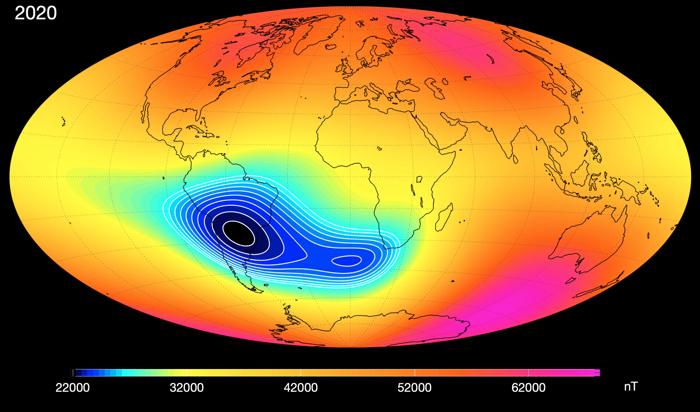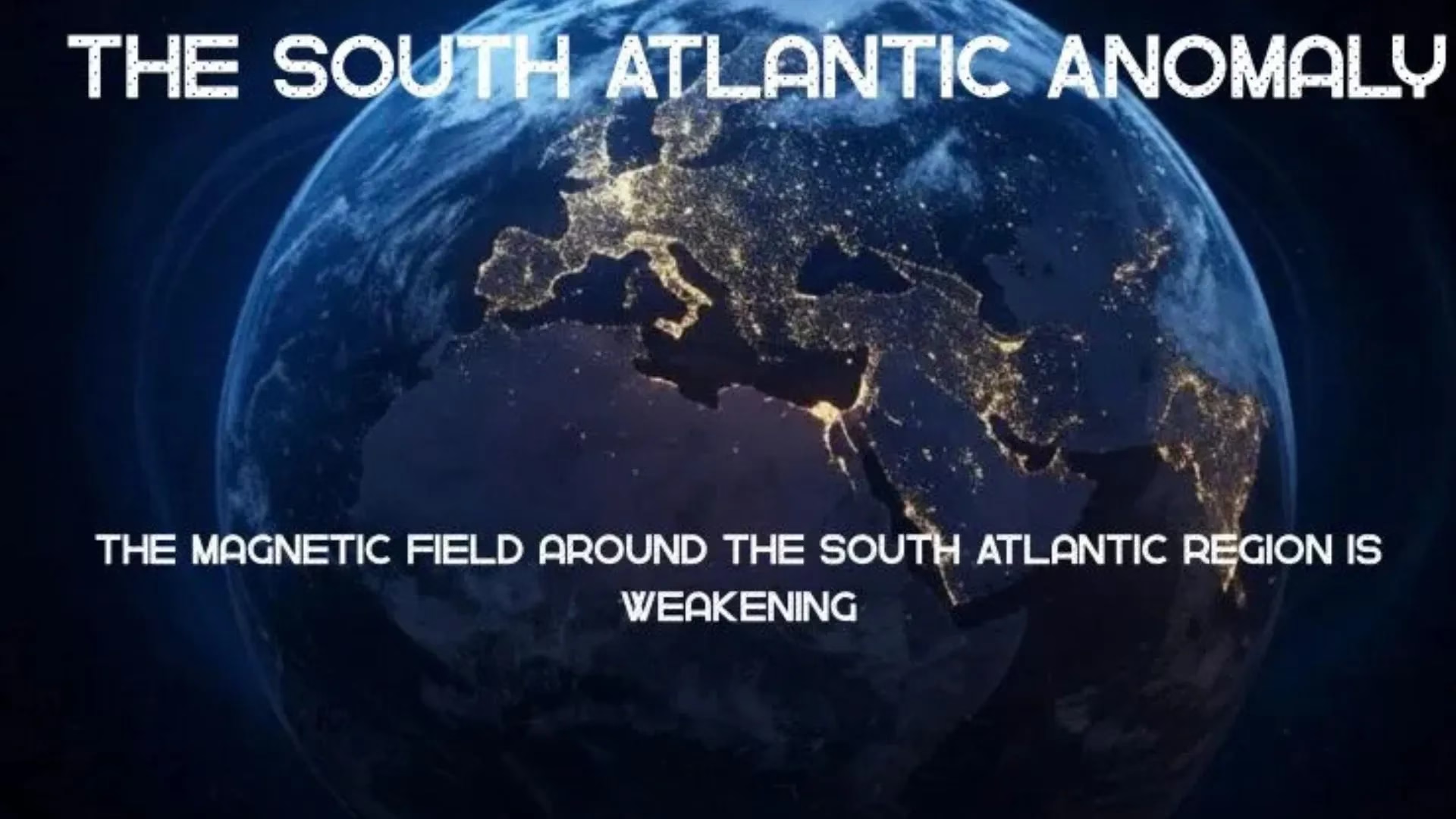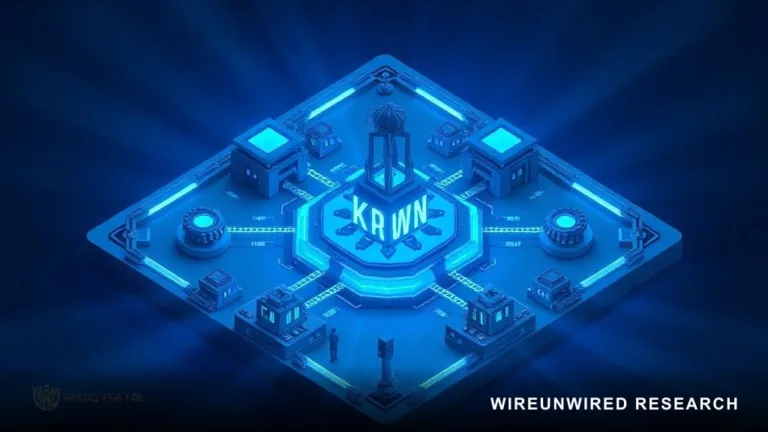The magnetic field around the South Atlantic region is weakening, and it is not the first time this has happened. Scientists call this the South Atlantic Anomaly. It is just that this time it has raised the eyebrows of the geologists and the American organization “NASA”, which has shown its keen interest in this topic. In this detailed article, we will try to understand why NASA is so concerned about this event and how it will affect the rest of Earth.

Before diving into detail, it is better to understand the internal structure of Earth, how this Earth’s magnetic field forms, and how this acts as a shield for us .
The Mystery of Earth’s Magnetic Field.
Mother Earth, which we see as an oval-shaped object, is actually made up of four primary layers:
Crust (Outer layer)
Mantle (Middle layer)
Outer Core (Liquid Metal)
Inner Core (Solid metal)

Source :Aakash
Each of these layers has unique properties, composition, and functions that play a crucial role in Earth’s geology. But today our area of interest is this outer core.
As shown above, this outer core of the earth is made up of liquid metals, primarily iron ore. It is this: the movement of the iron mass that generates electrical currents that create Earth’s magnetic field.
Since it is not necessary that there will be a uniform flow of these iron ores, magnetic fields also fluctuate at different parts of the earth. This whole generation of Earth’s magnetic field has been nicely stated by geophysicist Terry Sabaka from NASA’s Goddard Space Flight Centre in Greenbelt, Maryland.
How does Earth’s magnetic field act as a shield ?
Since childhood you would have heard that it is Earth’s magnetic field which has pulled the atmosphere around Earth, thus making life possible on the planet. But is it the only shield? NO…
Had there been no magnetic field , our Earth would have become Mars.
One of the primary things that E.M. Field has been doing is deflecting the solar wind—a continuous stream of charged particles of electrons and protons emitted by the Sun. Without this protective barrier, these high-energy particles would strip away Earth’s atmosphere, much like what happened to Mars, which lost most of its atmosphere due to the absence of a strong magnetic field.

Apart from deflecting solar wind, Earth’s magnetic field also protects against radiation in two other major ways:
Trapping Radiation in the Van Allen Belts
- Instead of allowing charged particles (like electrons and protons) to reach Earth’s surface, the Van Allen radiation belts capture and hold them in orbit.
- These belts act as a containment zone, preventing excess radiation from reaching lower altitudes.
- This is especially useful in shielding life on Earth from dangerous cosmic rays and high-energy solar radiation.
Guiding Charged Particles Towards the Poles (Auroras)
- Some particles escape the Van Allen belts and travel along Earth’s magnetic field lines towards the North and South Poles instead of hitting the surface directly.
- When these particles collide with gases in the upper atmosphere, they create stunning light displays called auroras (Northern and Southern Lights).
- This process safely dissipates some of the excess energy from solar radiation.

What is the South Atlantic Anomaly and how is it being formed?

The South Atlantic Anomaly is the weakening of Earth’s magnetic field in the South Atlantic region , primarily in the region spanning from Chile to Zimbabwe. The magnetic field has become so weak that it is posing problems to our international space stations , satellites, etc.
What’s the reason behind the South Atlantic Anomaly?
As we had discussed above, the earth’s magnetic field is nothing but a result of the flow of iron ores in the outer core part of the earth, and if the flow of these particles is disturbed in a particular region, then the magnetic field in that region will also get disturbed .
It is what is happening with the South Atlantic region.
A massive reservoir of dense rock beneath southern Africa, known as the African Large Low Shear Velocity Province (LLSVP), is disrupting the flow of molten metal in this region.
According to the researchers, this LLSVP is sharp, thousands of kilometres wide, and tens of millions of years old.
Since it is tens of millions of years old, it must have happened in past times also … Well, the answer is yes.
History of the South Atlantic Anomaly.
The South Atlantic Anomaly can be traced back to 400 CE .When researchers tried to find out any previous records of this , they found such repetitive behavior of magnetic field weakening during the years 400–450 CE, 700–750 CE, and 1225–1550 CE.
How were researchers able to trace magnetic field weakening ?
Well, all the credit goes to the Bantu tribe living in the Limpopo River Valley . Limpopo river valley area is the area bordering South Africa, Zimbabwe, and Botswana.
These tribes used to perform a ritual to tackle the problems of the drought in that area. This ritual involved burning down their clay huts and grain bins to summon rain. God knows whether they had knowledge of this or not, but when they used to burn clays at very high temperatures, it used to stabilize the magnetic minerals according to the magnetic field of the earth, and these clays, when cooled down, stored the memory of the magnetic field intensity.
Through these clays, only researchers were able to retrieve the magnetic field intensity of those times.
How can we protect our satellites from the South Atlantic Anomaly?
As the South Atlantic Anomaly (SAA) continues to evolve, scientists are working on ways to mitigate its effects on satellites and space missions. The key to protecting our space assets lies in continuous monitoring, predictive modeling, and strategic engineering solutions.
Some of the ways by which we can make our satellites safer are given below:
🔹 Tracking the Magnetic Field in Real Time
NASA and other space agencies use satellite data from missions like the European Space Agency’s Swarm constellation to monitor changes in Earth’s magnetic field. By analyzing these variations, researchers can better predict how the SAA might evolve in the coming years.
🔹 Advanced Geomagnetic Models for Forecasting
Scientists at NASA’s Goddard Space Flight Center use complex geodynamo models, similar to weather forecasting but on much longer time scales, to predict how Earth’s magnetic field might change. These models help in planning future space missions by identifying regions where satellites might experience increased radiation exposure.
🔹 Improving Satellite Shielding and Design
Engineers are developing advanced shielding techniques to protect satellites from the high-energy particles found in the SAA region. These improvements include:
- Hardened electronics to withstand radiation spikes
- Automatic shutdown protocols to prevent damage when a satellite crosses the anomaly
- Redundant systems to ensure critical functions remain operational
🔹 Strategic Orbit Planning
Space agencies are adjusting satellite orbits to minimize prolonged exposure to the SAA. Some missions incorporate software algorithms that allow satellites to switch to a lower-power mode while passing through the anomaly, reducing the risk of electronic malfunctions.
🔹 Continuous Observation and Future Missions
Since the SAA is slowly evolving, continuous monitoring is essential. Future missions will provide more data to refine existing models, allowing scientists to anticipate changes and ensure the safety of satellites in the years to come.
While the weakening magnetic field in the South Atlantic region poses challenges, proactive research and engineering advancements will help safeguard our satellites, ensuring they continue to function effectively in an increasingly unpredictable space environment.
Discover more from WireUnwired Research
Subscribe to get the latest posts sent to your email.




